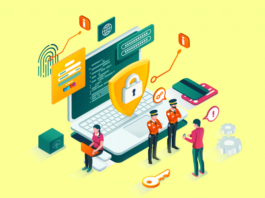Elon Musk made his aspirations for Twitter obvious just hours after Twitter said it had accepted Elon Musk’s takeover offer. Musk listed the major changes he intends to make in a press release, including opening up the algorithms that govern what users see in their feed.
Musk’s desire to open source Twitter’s algorithms stems from his long-standing concern about the platform’s potential for political repression, but it’s unlikely that doing so will have the desired effect. Experts worry that it may instead bring a slew of unexpected issues.
Although Musk has a deep dislike for authority, his ambition for algorithmic openness coincides with the wishes of legislators all around the world. In recent years, numerous governments have used this principle as a cornerstone of their efforts to combat Big Tech.
Melanie Dawes, the chief executive of Ofcom, the UK regulator of social media, has stated that social media firms would be required to explain how their code operates. In addition, the European Union’s newly passed Digital Services Act, which was approved on April 23, would oblige platforms to provide more openness. In February 2022, Democratic senators in the United States submitted legislation to create an Algorithmic Accountability Act. Their goal is to increase transparency and supervision of the algorithms that regulate our timelines and news feeds, as well as other aspects of our lives.
Allowing competitors to see and adapt Twitter’s algorithm potentially means that someone could just steal the source code and offer a rebranded version. Vast sections of the internet run on open-source software, the most renowned of which is OpenSSL, a security toolkit used by large swaths of the online that was hacked in 2014.
There are also open source social networks that have already been created. Mastodon, a microblogging network created in response to worries about Twitter’s dominant position, allows users to inspect its code, which is available on the GitHub software repository.
However, reading the code behind an algorithm does not always tell you how it works, and it doesn’t provide the typical individual much insight into the corporate structures and processes that go into its development.
“It’s a bit like trying to understand ancient creatures with genetic material alone,” says Jonathan Gray, a senior lecturer in critical infrastructure studies at King’s College London. “It tells us more than nothing, but it would be a stretch to say we know about how they live.”
Twitter is likewise not controlled by a single algorithm. “Some of them will determine what people see on their timelines in terms of trends, content, or suggested followers,” says Catherine Flick, a researcher at De Montfort University in the United Kingdom who studies computing and social responsibility. The algorithms that regulate what information shows in users’ timelines will be the ones that people are most interested in, but even that won’t be very useful without the training data.
Cobbe believes that the hazards outweigh the advantages. Because the computer code doesn’t reveal how algorithms were developed or evaluated, what elements or considerations went into them, or what was prioritised during the process, open-sourcing it may not make a significant change in Twitter’s transparency. In the meantime, it may pose severe security hazards.




